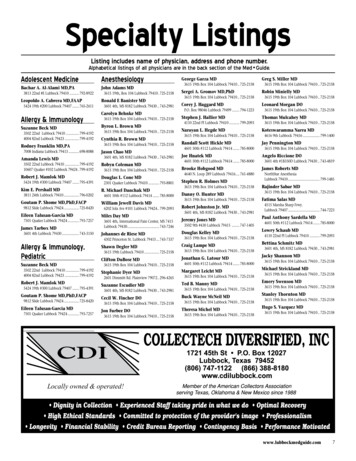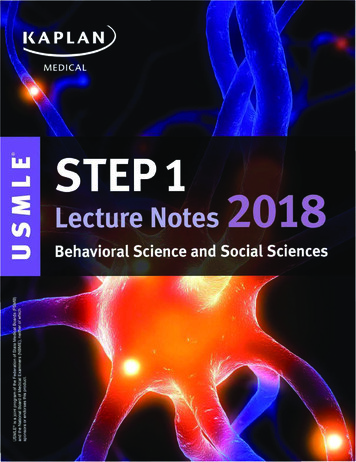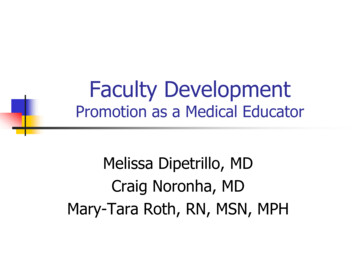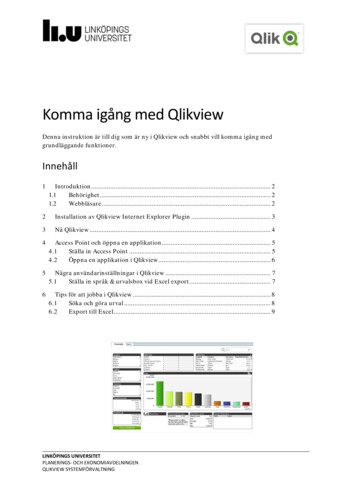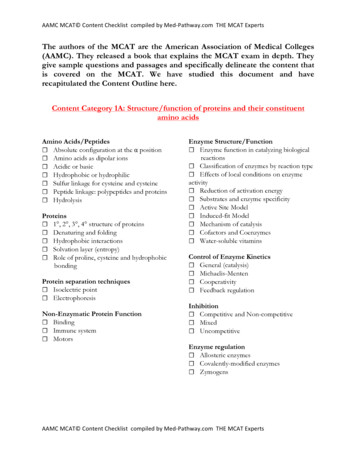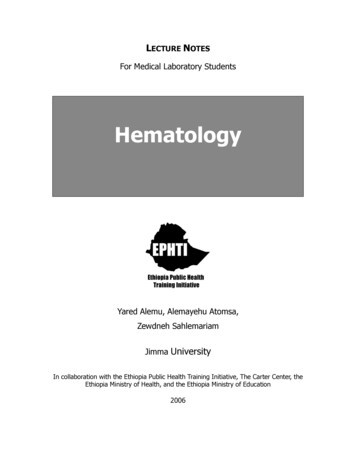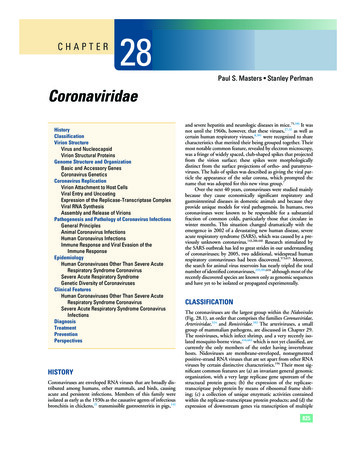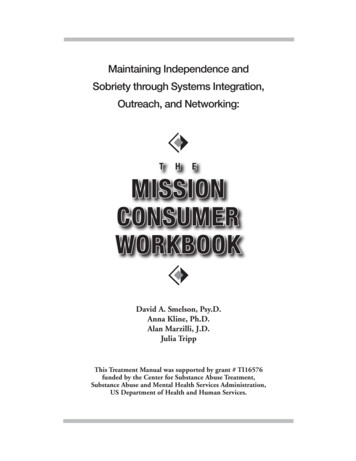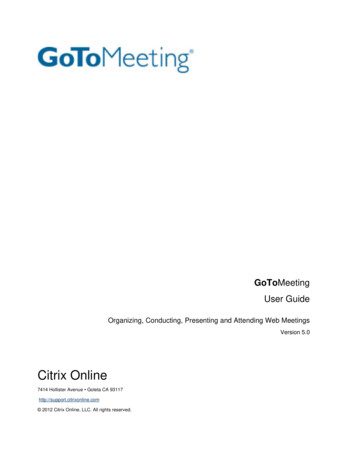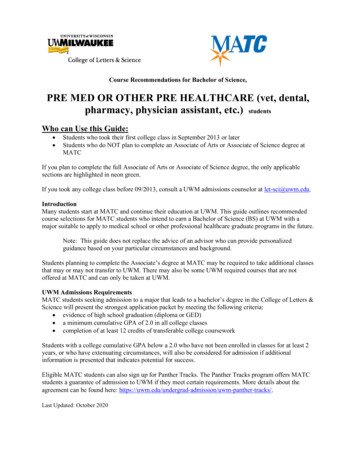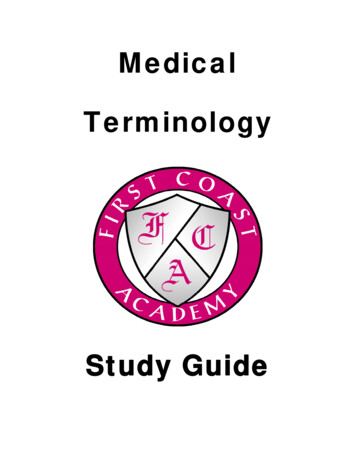
Transcription
MedicalTerminologyStudy Guide
Illustrated Guide to Medical TerminologyIntroductionHave you ever visited your doctor’s office, a diagnostic center, or a hospital andwondered what the medical professionals were talking about? It probablysounded like a foreign language to you. In many ways, “medical terminology” is alanguage all its own. There is a name for every part of the human body and aterm to describe diseases, disorders, etc., of every organ and system. TheIllustrated Guide to Medical Terminology is a comprehensive approach tounderstanding anatomy, physiology, medical terminology, and pathology. Thebook’s theme is “Read, Look, and Listen,” meaning you should read the text inthe book, look at the pictures and diagrams, and listen to the terms pronouncedon the accompanying audio CD. This course is ideal for the student who wouldlike to pursue a career in medicine—as a medical transcriptionist or any of theother various choices—or just has a general interest in medicine.
Chapter 1Basic Word StructureObjective Define a “root,” “suffix,” and prefixRecognize roots, suffixes, and prefixes in a medical termLearn the basic rules of medical word structureWrite the meaning of the suffixes, roots, and prefixes found in thechapterBuild medical termsDefine medical termsParts of Medical WordsThe main part of a medical word is called the root.The first part of a word is the prefix.The last part of a medical word is called the suffix.You learn medical terms by identifying the suffix first, then the root, andfinally the prefix.However, some words only have one or two parts.Basic Word StructureThe root of a medical word often refers to a body part. For a medical term tomake sense, a combining vowel is often added. The combining vowel is usedwhen a suffix starts with a consonant.The combining form is a root followed by a combining vowel.Remember to do the practice for learning questions and review exercisesfound in each chapter. They will help you gain a better understanding ofthe subject matter but you DO NOT have to return them for grading.
Exam 1Multiple Choice - Select the one best answer:1. The main part of a medical term is theA.B.C.D.prefixcombining form.root.suffix.2. The first part of a medical term is theA.B.C.D.prefix.suffix.root.combining vowel.3. The suffixA.B.C.D.is at the beginning of a medical term.joins two medical terms together.is at the middle of a medical term.is at the end of a medical term.4. When analyzing a medical word to determine the meaning, you should identifyand define theA.B.C.D.root first.suffix first.combining form first.prefix first.5. A combining vowel is used when theA.B.C.D.suffix starts with a vowel.prefix starts with a consonant.prefix ends with a vowel.suffix starts with a consonant.Continued on the next page
True/FalseAnswer each question true (T) or false (F).6. T FA combining vowel is not used if it is not needed for pronunciation.7. T FIn medical language, the root is almost always written in thecombining form.8. T FA suffix is found at the beginning of the word and is attached to aroot or a prefix.9. T FA prefix can be attached to the beginning of the word root orsometimes a suffix.10. T F Always use a combining vowel before a suffix that begins with a vowel.11. T F Never use a combining vowel between two roots.12. T F Most medical terms have two or more parts.Definitions – Choose the correct definition for each termA. study of bloodB. inflammation of jointsC. tumor of glands13. hematoma14. dysphasia15. arthritis16. adenoma17. osteoma18. hematologyContinued on the next pageD. difficulty speakingE. tumor of boneF. mass of blood
MatchingMatch the definition in column I with the correct term in column II.Column IColumn IIA. -logy19. InflammationB. oste-20. ManyC. poly-21. JointD. -it is22. DifficultE. dys-23. Study ofF. arthr-24. SpeechG. -phasia25. BoneThis is the End of this exam. Move on to the next lesson. You will need aNEW answer sheet for your next exam.
Chapter 2Basic Body StructureObjective Define “anatomy” and “physiology”Describe how the body is organizedDefine “cells,” “tissues,” “organs,” and “systems”Name 12 body systems and the common organs found in eachsystemDefine “roots” pertaining to the body systemsAnatomy and PhysiologyAnatomy is the study of the structure or parts of the bodyPhysiology is the study of how a body part functionsLevels of OrganizationA cell is living matter than can be seen only with a microscopeSimilar cells working together to perform a specific function make up tissuesTissues of all types combine to form organsRelated organs make up body systemsAll body systems combine to form a human beingBody SystemsThe human body is composed of twelve (12) body systems that work together toperform the necessary functions of life
Exam 2Multiple ChoiceSelect the one best answer:1. The study of how the human body works .2. The first level of body organization isA.B.C.D.tissuescellssystemsorgans3. The human body consists ofA. 9 systems.B. 10 systems.C. 11 systems.D. 12 systems.4. The term “lipoma” meansA. fatty tumor.B. disease of fatty cells.C. fat lip.D. fat removal.5. Pathology is the study ofA. life.B. tissues.C. disease.D. the human body.Continued on next page
CompletionChoose the letter for the correct answer and write it on your answer sheet.For question number six (6), choose the letter for the correct GROUP ofwords that answer the question.6. List the organization of the human body: Human BodyA. organs, body systems, human body, tissuesB. human body, cells, organs, body systemsC. cells, tissues, organs, body systemsD. cells, tissues, human body, organs7. The system is the largest system in the body and consists ofnails, hair, and skin.A. cardiovascularB. integumentaryC. skeletalD. endocrine8. The system provides support, protection, and movement andconsists primarily of bone.A. skeletalB. nervousC. lymphaticD. muscularContinued on the next page
9. The system is responsible for circulating blood, oxygen, andnutrients throughout the body.A. nervousB. muscularC. skeletalD. cardiovascular10. The system is responsible for filtering and removing liquidwastes; its primary organs are the kidneys and bladder.A. urinaryB. respiratoryC. lymphatic and immuneD. digestive11. is inflammation of the mouth.A. arthritisB. stomatitisC. tendonitisD. tonsillitis12. is the study of the skin.A. hematologyB. endocrinologyC. dermatologyD. urology13. An inflammation of the tendons is .A. arthritisB. bursitisC. hepatitisD. tendonitis
14. The study of the eyes is called .A. optometryB. ophthalmologyC. meteorologyD. neurology15. The study of the blood is called .A. anthropologyB. hematologyC. endocrinologyD. dermatologyIdentify the root for each of the following:16. neurologyA. logyB. neuro17. myelographyA. myeloB. graphy18. cardiovascularA. vascularB. cardio19. phlebotomyA. phleboB. tomyContinued on the next page
Identify the prefix for each of the following:20. pericarditisA. it isB. cardiC. peri21. polymyositisA. myosB. polyC. itis22. dysplasiaA. dysB. plasiaIdentify the suffix for each of the following:23. biologyA. bioB. logy24. appendicitisA. itisB. appendic25. myelomaA. myelB. omaThis is the End of this exam. Move on to the next lesson. You will need aNEW answer sheet for your next exam.
Chapter 3Common SuffixesObjectives Spell and define common suffixesIdentify suffixes used to convert medical nouns to adjectivesPronounce, spell, define, and write medical terms found in thechapterVocabularyExcision: to cut outIncision: to cut intoPrognosis: forecast of the outcome of the diseaseRadiography: images that are taken of any internal body structureIn your textbook, make sure you review the sections on New Roots And Prefixesand follow the directions for Learning The Terms.Also, pay attention to the pictures, graphics, and X-Rays throughout the chapter.They are there to help you understand the terms and how they apply to specificbody partsRemember to do some of the questions in the Review Exercises. They willhelp prepare you for the exam.
Exam 3Multiple Choice – Select the one best answer1. Cutting into the skin for a surgical procedure involves a/an .A.B.C.D.incisionknifectomysurgicalotomyexcision2. The physician removes a lipoma from the patient in surgery. This type ofprocedure is a/an .A.B.C.D.tumorostomytumorectomyexcisionincision3. A physician who studies and interprets X-rays is a/an ist4. Appendicitis is a/an .A.B.C.D.tumor of the appendixbursting of the appendixinflamed appendixcollection of blood in the appendix5. The surgical procedure that involves removal of the thyroid gland is yroidectomyContinued on the next page
6. A bronchoscopy involvesA.B.C.D.using an instrument to look into the bronchi (lungs).removing a mass from the bronchus.incising an abnormality of the bronchi.using X-ray to diagnose a condition of the bronchi.7. A patient complains of pain and discomfort in the bladder during urination. Thephysician states she has cystitis. From your knowledge of medicalterminology, you this is a/anA.B.C.D.enlarged prostate gland.inflammation of the bladder.cyst of the urinary system.stone in the ureter.8. A patient with lymphadenopathy hasA.B.C.D.widespread lymphatic disease.cancer of the lymphatic system.a diseased lymph node.had a biopsy of the lymphatic system.Definition – Define the following terms9. CephalgiaA. inflammation of the tonsils10. TonsillitisB. abnormal condition of the kidney11. ArteriogramC. inflammation of the area (sac) surrounding the heart12. HysterectomyD. surgical removal of the uterus13. PericarditisE. record (image) of an artery14. LaryngectomyF. removal of the larynx (voice box)15. NephrosisG. headache; pain in the headContinued on next page
Matching – Match the definition with the correct term16. Surgical opening into the colonA. gastritis17. Physician who specializes in femalereproductive conditionsB. myalgia18. Inflammation of the stomachC. gastrostomy19. Muscular tumorD. enteritis20. Tumor that arises in nerve cellsE. orchidectomy21. Surgical removal of testisF. colostomy22. X-ray of the fallopian tubesG. neuroma23. Surgical opening into the stomachH. myoma24. Inflammation of the small intestineI. salpingogram25. Muscular painJ. gynecologistThis is the End of this exam. Move on to the next lesson. You will need aNEW answer sheet for your next exam.
Chapter 4Common PrefixesObjectives State the meaning of prefixes found in this chapterPronounce, spell, define, and write medical terms that use prefixes inthis chapterIdentify prefixes that have the same meaningIdentify prefixes that have the opposite meaningIn your textbook, make sure you review the sections on New Roots And Prefixesand follow the directions for Learning The Terms.Also, pay attention to the pictures, graphics, and X-Rays throughout the chapter.They are there to help you understand the terms and how they apply to specificbody partsRemember to do some of the questions in the Review Exercises. They willhelp prepare you for the exam.
Exam 4Multiple Choice – Select the one best answer1. Pneumothorax isA.B.C.D.air in the chest cavity.breathing in air.injection of air.air in the lungs.2. The prefix “ante-“ meansA.B.C.D.aroundafterbeforeagainst3. A symptom or symptoms occurring before the onset of disease is a/theA.B.C.D.prognosispost mortemperimortemprodrome4. Dyspnea isA.B.C.D.difficulty digesting fooddifficulty breathingpainful activityworsening pain5. A sublingual medication is givenA.B.C.D.under the skinvia inhalationunder the tonguein the rectum6. A patient with a urinary tract infection has dysuria and hematuria. You knowthis meansA.B.C.D.difficult, painful urination and blood in the urine.pain in the kidneys and a stone in the bladder.pain in the bladder and burning on urination.urine that is abnormal in appearance with mucous.
Matching – Match the definition with the correct term7. Above, excessiveA. hypo-8. NewB. bi-9. BetweenC. ex-10. Below, deficientD. dia-11. Through, completeE. hyper-12. No, notF. epi-13. ManyG. ne/o14. Upon, aboveH. poly-15. TwoI. inter-16. OutJ. a(n)-True/False – Use your knowledge of medical terminology and prefixes toanswer each question17. The antepartum patient is expecting a baby.T(True) or F (False)18. The patient who is in renal failure and cannot produce urine is antiuric.T (True) or F (False)19. An endotracheal tube is placed into the trachea to deliver oxygen.T (True) or F (False)20. The intercostal muscles are between the ribs.T (True) or F (False)21. A hypothermic patient has a high fever.T (True) or F (False)
22. A neoplasm is an area that has been present since birth.T (True) or F (False)23. The preoperative patient has just had surgery.T (True) or F (False)24. A patient with bilateral cataracts (clouding of the lens) has cataracts in botheyes.T (True) or F (False)25. Nurses in the postanesthesia care unit (PACU) care for patients who arerecovering after being given anesthesia.T (True) or F (False)This is the End of this exam. Move on to the next lesson. You will need aNEW answer sheet for your next exam.
Chapter 5Body OrganizationObjectives Name the cavities of the body and their related organsDefine the anatomical positionDefine common terms used for directionsName and locate the abdominopelvic regionsName and locate the abdominopelvic quadrantsPronounce, spell, define, and write medical terms common to thebody as a wholeListen, read, and study so you can speak and write effectivelyBody CavitiesThe body has empty spaces inside of it that are called cavitiesThe body’s two main cavities are the dorsal and the ventral.
1. The main part of a medical term is the A. prefix B. combining form. C. root. D. suffix. 2. The first part of a medical term is the A. prefix. B. suffix. C. root. D. combining vowel. 3. The suffix A. is at the beginning of a medical term. B. joins two medical terms together. C. is at the middle of a medical term. D. is at the end of a medical term. 4. When analyzing a medical word to determine the meaning, you should identifyFile Size: 491KBPage Count: 103
